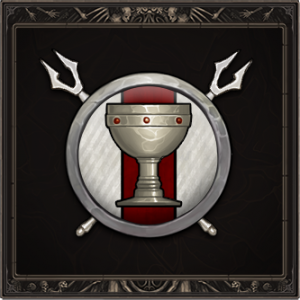Faction Profile
Founded: 749 AS
Governance: Panel of Provost, headed by the Grand Provost
Spokesman/Public Information Officer/Figurehead: Grand Provost Emilio Desi
Primary Function/Purpose: Republic Medical Services, Quarantine Protocols, Illness Research and Prevention
Estimated Numbers: Between 500,000 – 1 million (Republic-wide)
Republic Influence: Extremely High
Republic Disposition: Loyalists
Citizenry Reputation: Mistrusted. Scorned by many outside of the Eastern Baronies.
Military Strength: Low
Seat of Operations: Redholme, Eastern Baronies
Common Ranks/Titles:
- Grand Provost
- Surgeon General
- Provost
- Provost Marshall
- Lieutenant Provost
- Pedagogue
- Apothecary
- Apothecary Aspirants
Post-Torment State: Thriving
Presence in First Province: Low
Overview
Since the dawn of man mortality has remained its ever-present companion. Be they lowly pauper or Prelate, none walk without death’s shadow. As true as is the nature of mortality, so true is man’s nature to understand it, postpone it, and reject it. No other organization within the Republic holds these goals more closely than the Venerated Apothecary Corps. Medicinal studies and applications have been practiced since the dawn of man to stave off his own creeping mortality. Upon the birth of these focused practices, within the monastic cloisters of the Decusian Faith, the Venerated Republic learned the importance of its advancement and studies in modern medicine. If the Republic was to survive the great ills that plagued Eden, it would have to endure, but it would also have to nurture.
During the Reckoning, both Legion and Templar forces sustained heavy casualties, ranging from debilitating wounds to traumatic lingering effects upon the mind. Having no true way of treating the now broken faithful, the Church was left with abandoning men and women who answered the call of the Holy Faith with steadfast zeal; to be left wandering the streets as lost souls till returned to the Flame. As the sandals and swords of the Venerated Republic reached the Western Shores of the Tempest Ocean, small cloisters of monastic communes began to dot the landscapes. They brought faith and comfort with open arms and open hearts to all. By their vow to conserve life, these monks were obligated to serve in the capacities that aided all who walked in the light of Decus and the Eight Virtues. In monasteries of steadfast walls and strong communal views backed by vows of poverty, these individuals were a beacon of hope in a still very dark world. It was within these communes that the ailing and infirm found solace. They received rudimentary medicine to help alleviate their plight along with education, food, and more importantly faith and purpose.
Of these monastic orders, the most famous was founded roughly in 500 AS within the First Province: Aiwella. Originally known as the Brotherhood of Porphyry, these devout monastics found themselves with a unique geological position close to the heart of the Republic’s seat, Tor. Due to this, they were able to establish a better line of communication on the development and importance of medical advancement, for both its citizenry and the Republic as a whole. This close proximity allowed the Brotherhood of Porphyry not only to show the Republic what had become of its brothers and sisters who fought in the Reckoning, but more importantly, how proper treatment could rehabilitate and return the formally feeble to help lubricate the cogs in the great venerated machine. Although Aiwella made grounds in medicinal treatment, it was their studies on how trauma affects the mind that gave way to new grounds and became one of the cornerstones of modern psychology pursuits today. As these studies bore fruit, the Church invested heavily in the monastic practices around Vitaveus and in turn, requested some of these brotherhoods to act as healers and medical professionals to Republic forces. It was in this light that the official Apothecary Corps were born, and in 749 AS, as the Venerated Republic transitioned from an Empire, that the first doctors and medical professionals took office within the Church.
Although Aiwella made grounds in medicinal treatment, it was their studies on how trauma affects the mind that gave way to new grounds and became one of the cornerstones of modern psychology pursuits today. As these studies bore fruit, the Church invested heavily in the monastic practices around Vitaveus and in turn, requested some of these brotherhoods to act as healers and medical professionals to Republic forces. It was in this light that the official Apothecary Corps were born, and in 749 AS, as the Venerated Republic transitioned from an Empire, that the first doctors and medical professionals took office within the Church.
As of 1313, the College of Bishops gave the Grand Provost and the 109th, supreme oversight of all chapters of the Apothecary Corps in order to collaborate a focused direction towards a cure for the Torment. Furthermore, his directive has also given the Apothecary Corps the exclusive right to annul any directives and rulings of governmental bodies when the threat of the Torment persists, along with giving them authority of all Republic citizens and entities to combat the spread of a Torment blight.
At the helm of their operations stands the Grand Provost, who oversees everything that takes place within the Chapters and Hospitaller Orders. He is the direct reporting agent to the College of Bishops and the Archbishop himself, and in turn makes sure their direction and hopes for the good of the Republic are sought after by the Apothecary Corps. Directly under him are the Surgeon Generals, who are the standing figureheads for each Hospitaller Order within Vitaveus; the 109th, the 233rd, and the 701st all see the specific focus and research and development of applicable procedures for the Apothecary Chapters to utilize during their to combat sickness, injury and the plague. Under these Surgeon General’s, are various developmental laboratories and doctors with extensive backgrounds in specific fields, taking data and information from the frontlines where death is fought on a daily basis. The 109th sees to the development of antibiotics, genetic research and oversees the others in the fight against the Torment. The 233rd is specialized in the understanding of anatomy and physiology, along with the advancement of surgery procedures and protocols. Lastly, the 701st took over for Aiwella’s efforts in mental health and the appliance of allopathy to help fight the combat fatigue that befall the Republic’s war machine.
Within each of these Hospitaller Orders, various scientists and doctoral experts in diverse fields provide research and analysis of every piece of data and evidence placed before them by the Provost Marshall; this Provost Marshall shoulders a vastly demanding and thankless job, acting as a liaison between regional expeditionary forces of the Apothecary Corps, providing them with logistical support, cutting edge medical information, and disseminating any findings the expeditionary orders come across, to those within the Hospitaller Orders and higher headquarters.
These expeditionary forces are led by a Provost; doctoral experts who act on behalf of the Apothecary Corps, delivering not only medical attention to those with need, but are also the foremost authority and judiciary bodies on the Torment and responses to the cataclysmic pandemic striking their area of operations. Supporting them, and acting as an intermediary for the Provost, and all Republic forces affected by quarantine and potential Torment outbreaks is the Lieutenant Provost. These Lieutenants help filter the possible issues that may arise between the Republic’s various factions and supporters, providing insight to allow them to operate to the best of their capacities, while still maintaining quarantine protocol. The main body of these expeditionary medical practitioners are those appointed with the rank of Apothecary; providing medical and quarantine response to aid in the efforts of the Republic and its citizenry. Each member who attains the rank of Apothecary becomes a subject matter expert in a select field, providing something to the expertise of the expeditionary force, be it the study of degenerative diseases, psychological medical applications, or traumatic surgery. The lowest ranking members, though still large in numbers, are the Apothecary Aspirants, individuals who have not passed their doctoral exams and trials, but work in a capacity similar to that of nurses and assistants.
Standards, Colors and Guidons

The Apothecary Standard is a jewel-encrusted chalice, which represents the mortal vessel to which the soul is held. The three gems adorning this cup stand for the three parts of the Felenioc Teachings: To conserve life to the best of one’s discernment; to credit the progress of others who have come before; and to share knowledge for those who have yet to come.
The colors are the Republic’s signature red and white, denoting the faction being an extension of the Church Clergy Caste.
The Apothecary Corps most popular credence, “Calcis, cinis, sal et sulphur.”, is translated into common as “Limetone, ash, salt and sulphur.” harkens to the teachings of High Avatar’s Felenius, and the basis of Decusian Humoral Medicine.



